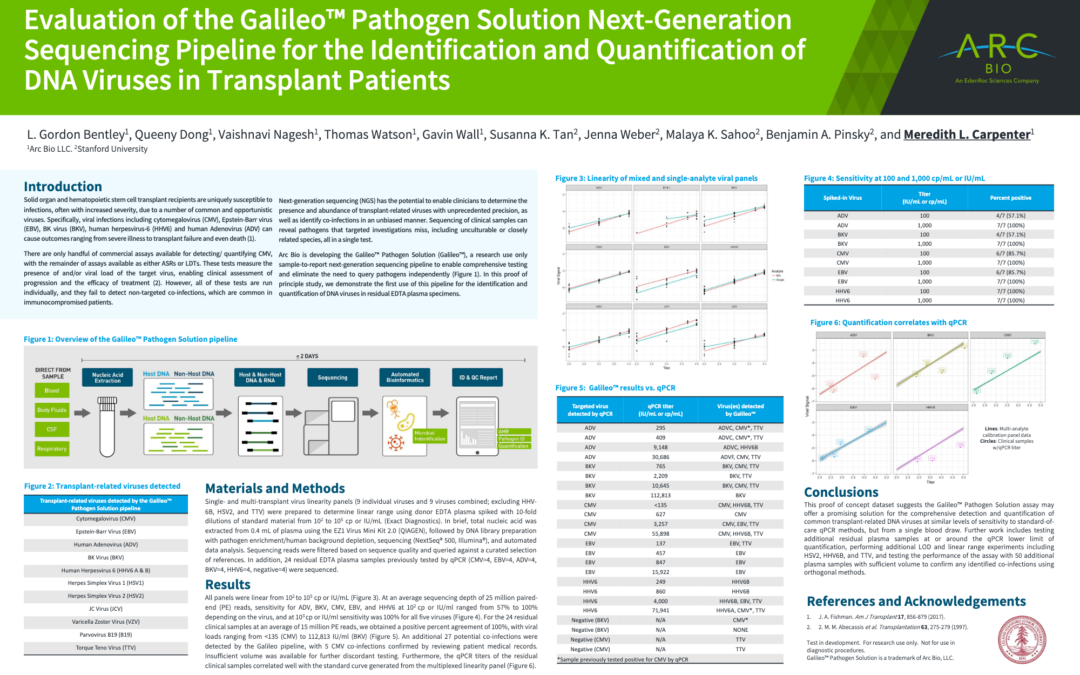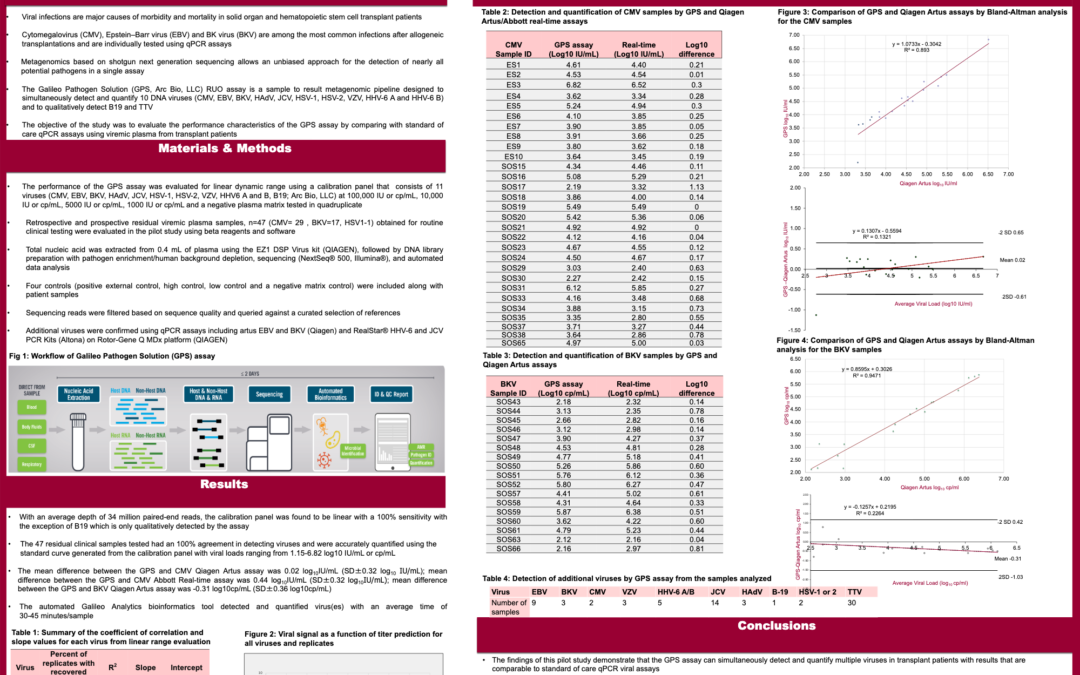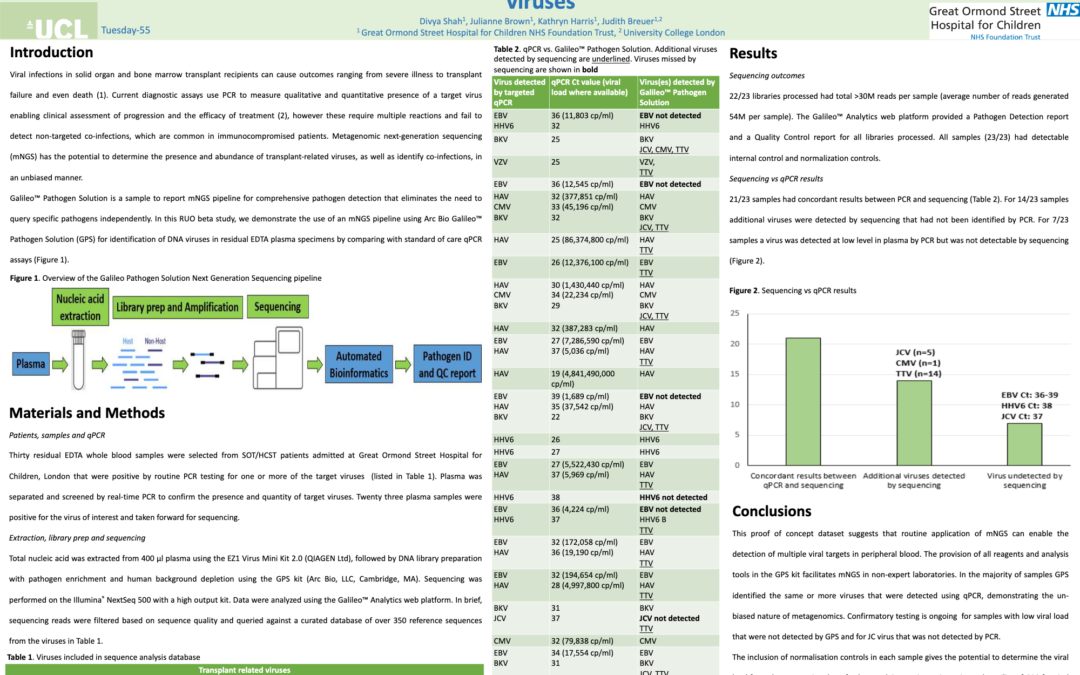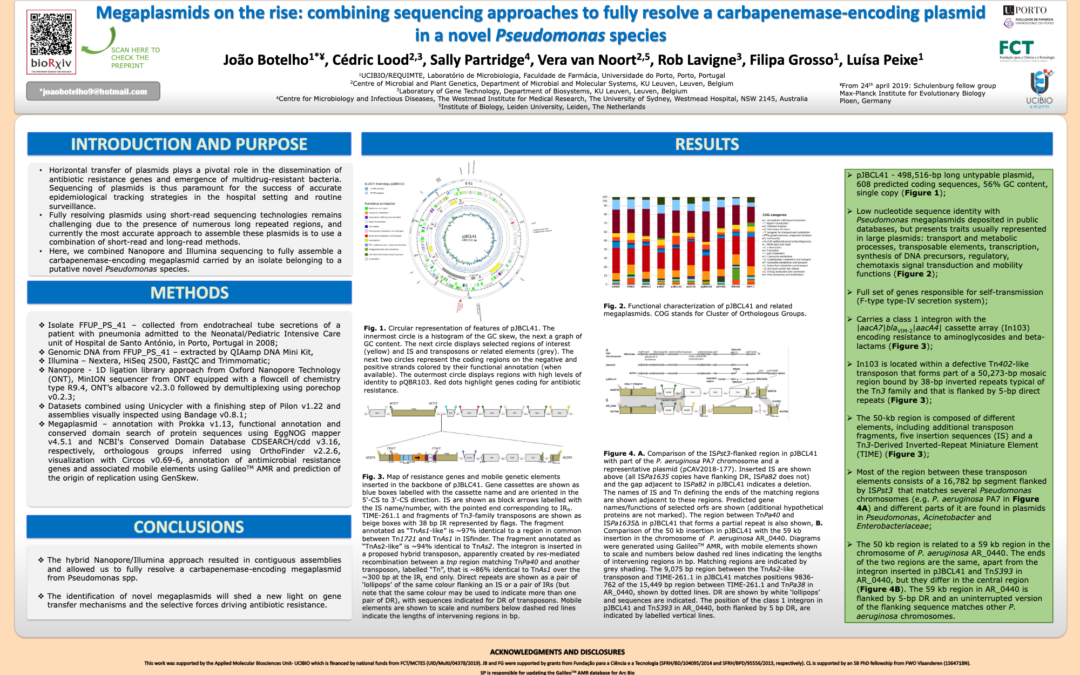
Poster – Evaluation of the Galileo™ Pathogen Solution Next-Generation Sequencing Pipeline for the Identification and Quantification of DNA Viruses in Transplant Patients
NGS-based metagenomics in the clinical virology laboratory
Poster Presentation at the Association for Molecular Pathology Conference 2018 Learn more about Galileo™This poster was presented at the Association for Molecular Pathology Conference, which took place in San Antonio Texas in November 2018 by Dr. Meredith L. Carpenter, Director Of Assay Research & Development at Arc Bio.
Abstract:
“Solid organ and hematopoietic stem cell transplant recipients are uniquely susceptible to infections, often with increased severity, due to a number of common and opportunistic viruses. Specifically, viral infections including cytomegalovirus (CMV), Epstein-Barr virus (EBV), BK virus (BKV), human herpesvirus-6 (HHV6) and human Adenovirus (ADV) can cause outcomes ranging from severe illness to transplant failure and even death.
There are only handful of commercial assays available for detecting/quantifying CMV, with the remainder of assays available as either ASRs or LDTs. These tests measure the presence of and/or viral load of the target virus, enabling clinical assessment of progression and the efficacy of treatment. However, all of these tests are run individually, and they fail to detect non-targeted co-infections, which are common in immunocompromised patients.
Next-generation sequencing (NGS) has the potential to enable clinicians to determine the presence and abundance of transplant-related viruses with unprecedented precision, as well as identify co-infections in an unbiased manner. Sequencing of clinical samples can reveal pathogens that targeted investigations miss, including un-culturable or closely related species, all in a single test.”
In this presentation you will learn:
- What is NGS-based metagenomics (mNGS) is and how it can be applied to pathogen detection
- How mNGS compares with and improves upon qPCR as a detection platform
- What the mNGS workflow looks like when deployed in your laboratory
- Why deploying mNGS into your laboratory makes sense
- How Arc Bio has approached mNGS with its Galileo™ platform


